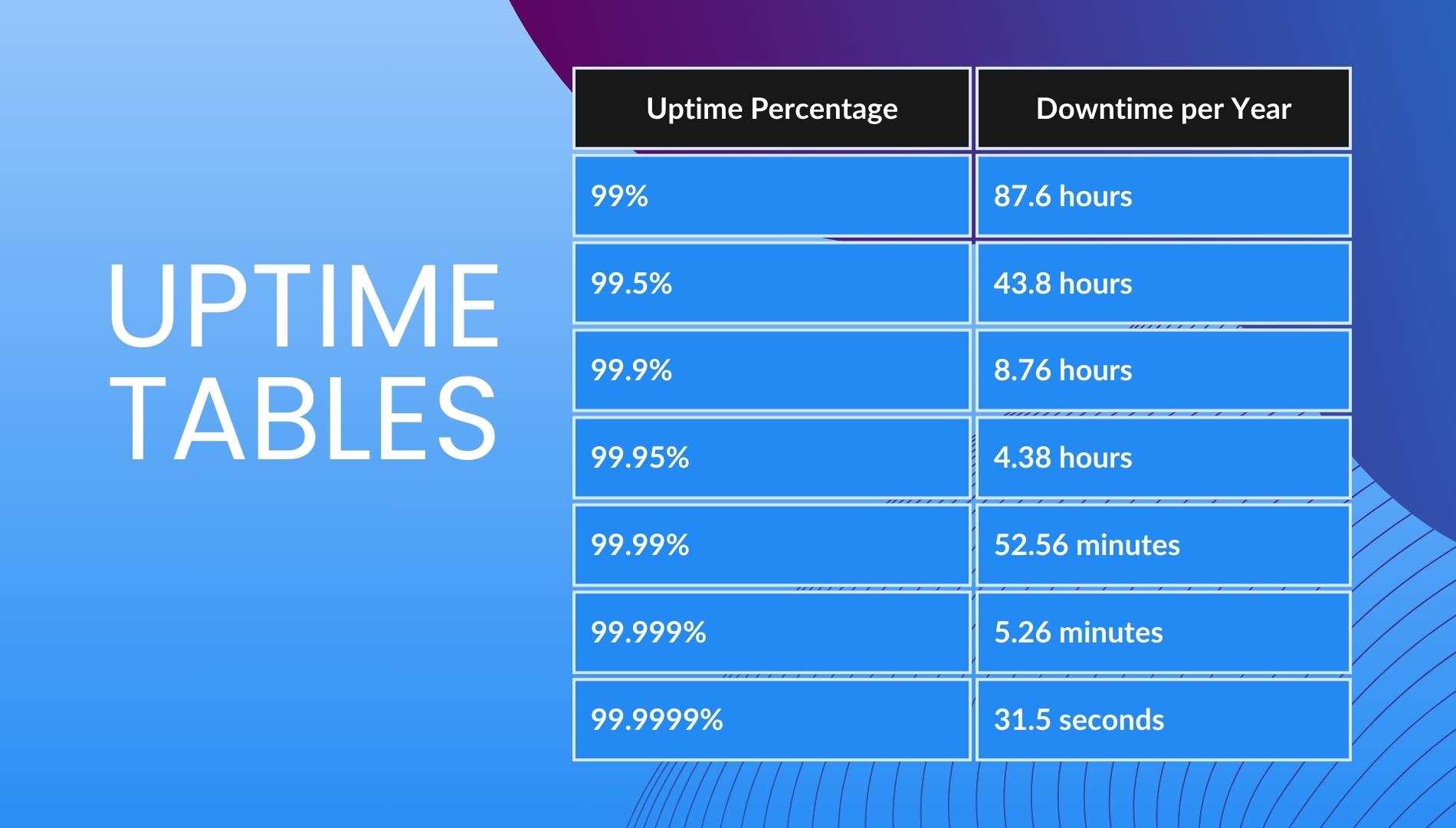What if you had a guarantee that your website would almost never go down, especially during crucial times? This is where Service Level Agreements (SLAs) come into play. But what exactly are SLAs, and why are they so crucial for both service providers and their customers in web content management? This blog will explore the intricacies of SLAs and highlight their importance in managing expectations and ensuring service quality.
The Basics of SLAs Definition and Components
An SLA is essentially a contract between a service provider and a customer that outlines the expected level of service. These agreements are pivotal in preventing misunderstandings and ensuring both parties are clear about service specifics.
Different Types of SLAs
There are typically three types of SLAs that might be utilized in various sectors:
- Network Service SLAs: These involve specifics around network uptime and data throughput.
- Application Service SLAs: Focus on performance metrics for software applications, including availability and bug response times.
- Customer Service SLAs: Ensure that customer service remains efficient in response times and issue resolution metrics.
Key Components of SLAs: Performance, Responsibilities, Remedies, and Penalties
Common Performance Metrics in SLAs
SLAs include crucial metrics such as uptime, response time, and resolution time for support tickets. These metrics are measurable and quantifiable, ensuring that the service provider meets their contractual obligations. The goals should incorporate best practices and metrics often include:
- Service Availability:
- Refers to the percentage of time a service is fully operational and accessible to users.
- Critical for applications that require constant online presence such as e-commerce sites, customer portals, and other cloud-based services.
- Often measured as uptime, with targets like 99.9% ("three nines") or higher.
- Uptime:
- A specific measure of service availability, typically expressed as a percentage.
- High uptime percentages (like 99.999%) are crucial for businesses where even minimal downtime can cause significant disruptions or financial loss.
- Uptime guarantees ensure that the web services remain accessible almost all the time, barring a few minutes of maintenance or unforeseen issues annually.
- Response Time:
- Measures how quickly the service provider reacts to a request, which could be a customer query, a page load request, or a system call.
- Essential for maintaining user satisfaction as slow response times can frustrate users and lead to negative experiences.
- Often set with specific thresholds in milliseconds or seconds, depending on the criticality of the application.
- Resolution Time:
- Tracks the time it takes to fully resolve an issue or support ticket after it has been reported.
- Important for maintaining operational efficiency and ensuring that any disruptions have minimal impact on service continuity.
- SLAs may specify different resolution times based on the severity of issues, with more critical problems requiring faster resolution.
- Support Ticket Resolution:
- Focuses on the efficiency and effectiveness of the customer support team in addressing and resolving reported problems.
- A key component of customer service, ensuring users that any problems they encounter will be addressed promptly.
- Metrics can include the percentage of tickets resolved within a predetermined time frame, reflecting the service provider's commitment to quality support.
These metrics are often tailored to the specific services provided and can be adjusted based on the needs and expectations of the customer, ensuring that the SLA aligns with both party's objectives and capabilities.
Responsibilities
One of the fundamental aspects of a Service Level Agreement (SLA) is defining the responsibilities of both the service provider and the client. Clear delineation of responsibilities ensures that both parties know exactly what is expected of them, helping to prevent disputes and misunderstandings.
- Service Provider Responsibilities: These typically include delivering services at the agreed-upon performance level, maintaining a reliable and secure infrastructure, providing timely customer support, and issuing regular reports on service performance. For instance, a web hosting provider would be responsible for ensuring network stability, managing data backups, and providing technical support to resolve issues.
- Client Responsibilities: Clients must typically ensure that they use the services in accordance with the terms of the SLA. This can include timely payments, providing necessary information for service provisioning, complying with security policies, and communicating changes in requirements or usage patterns. For example, clients may need to guarantee that their software configurations are up to date and that they do not exceed usage limits defined in the SLA.
Remedies and Penalties
Remedies and penalties are crucial in SLAs because they outline what recourse is available if service commitments are not met. This section of the SLA defines the compensation clients can expect if the provider fails to fulfill service obligations, which acts as an incentive for providers to uphold their end of the bargain.
- Service Credits: One common remedy in SLAs is the provision of service credits. These are often applied as discounts or credit notes against future services. For instance, if an IT service fails to meet the uptime commitment of 99.9%, the SLA might stipulate that the client receives a credit worth a percentage of their monthly fee based on the downtime experienced.
- Penalty Clauses: Some SLAs may include penalties for repeated failures to meet service levels. These penalties can be monetary and are meant to provide financial compensation for the inconvenience and potential business losses caused by inadequate service levels.
- Performance Reviews: Many SLAs include a clause for regular performance reviews. These reviews allow clients and providers to discuss the SLA’s effectiveness and make adjustments as necessary. This is especially important in long-term contracts where business needs may evolve over time.
- Escalation Procedures: In the event of a service issue, SLAs typically outline a clear escalation procedure. This ensures that if the standard remedial actions fail to resolve an issue, there is a predefined path to escalate the problem to higher management levels within the provider's organization.
- Termination Rights: If the service provider continually fails to meet service requirements, an SLA may grant the client the right to terminate the agreement without penalty. This clause is crucial for clients as it provides a way out of an unfulfilling contract.
By clearly defining responsibilities, and setting out remedies and penalties, SLAs create a foundation of accountability and reliability between service providers and their clients. This balance of obligations and repercussions helps maintain a fair and productive relationship, ensuring that both parties strive to meet their commitments.
According to a PandaDoc template, an SLA specifies performance metrics, responsibilities, expectations, and remedies or penalties if these are not met. Below are some examples of typical components found in SLAs, inspired by the structure often suggested in templates like those from PandaDoc:
Examples of SLA Components
- Performance Metrics:
- Uptime Guarantee: The provider commits to 99.99% uptime per month.
- Response Time: Service requests will receive a first response within 1 hour.
- Resolution Time: Critical issues will be resolved within 4 hours of identification.
- Responsibilities:
- Provider Responsibilities: Maintain hardware and software infrastructure, perform regular updates and patches, and ensure security protocols are up to date.
- Customer Responsibilities: Provide timely notice of issues, maintain secure credentials, and ensure compliant use of the service.
- Expectations:
- Service Coverage: Services will be available 24/7, with scheduled maintenance occurring during off-peak hours and communicated in advance.
- Customer Support: Support will be provided via email, phone, and live chat, with escalations procedures clearly defined.
- Remedies and Penalties:
- Service Credits: In cases where uptime falls below the guaranteed level, customers will receive service credits equivalent to the duration of the downtime.
- Penalty Clauses: Repeated failures to meet resolution times may result in financial penalties or the option for the customer to terminate the agreement prematurely.
- Review and Adjustment:
- Regular Review: The SLA will be reviewed annually to ensure it remains aligned with both parties' objectives and industry standards.
- Adjustment Mechanism: Adjustments to the SLA may be made post-review, to reflect new services, technologies, or changes in business operations.
By detailing these components clearly, SLAs facilitate a transparent relationship between service providers and customers, ensuring that there are mutual understanding and clear expectations. This structure not only helps in maintaining service quality but also builds trust, as both parties acknowledge their roles and the consequences of not fulfilling their obligations.
Why SLAs Matter in Web Content Management
Critical Role of Uptime
Uptime is one of the most critical metrics for any online service, directly impacting both user experience and business continuity. In the context of web content management, especially for sectors like e-commerce or financial services, uptime not only ensures that the website is accessible to users but also that it can handle transactions securely and efficiently without interruptions. Our standard hosting SLA outlines our commitment to maintaining your site's availability with minimal disruption, ensuring that your digital operations run smoothly and reliably.

Conclusion: The Strategic Importance of SLAs in Enhancing Web Management
Service Level Agreements are not merely administrative formalities; they are strategic tools that safeguard the operational integrity of web services. In web content management, where downtime can equate to lost revenue and damaged reputations, the assurance provided by SLAs is invaluable.
Action Steps to Take
- Review Your Current SLAs: Assess whether your current service agreements meet the needs of your business and adjust where necessary.
- Consult With Experts: Consider consulting with Concrete CMS professionals to understand how our SLA offerings can be tailored to support your unique business requirements.
- Educate Your Team: Ensure that your team understands the importance of SLAs and how they can leverage these agreements in managing service providers.
Sources:
- ExterNetworks Inc. (n.d.). Service Level Agreement: Monitoring & Reporting. ExterNetworks. Retrieved April 23, 2024, from https://www.extnoc.com/blog/service-level-agreement-monitoring-reporting/
- Atlassian. (n.d.). What is SLA (Service Level Agreement) in service request management? Atlassian. Retrieved April 23, 2024, from https://www.atlassian.com/itsm/service-request-management/slas
- ProcessModel. (n.d.). What is an SLA? ProcessModel. Retrieved April 23, 2024, from https://www.processmodel.com/help/what-is-an-sla/
- Wikipedia contributors. (2024, April 23). Service-level agreement. Wikipedia. Retrieved April 23, 2024, from https://en.wikipedia.org/wiki/Service-level_agreement
- Hildreth, B. (2007, August 15). Outsourcing SLA Definitions and Solutions. CIO. Retrieved April 23, 2024, from https://www.cio.com/article/274740/outsourcing-sla-definitions-and-solutions.html?amp=1
